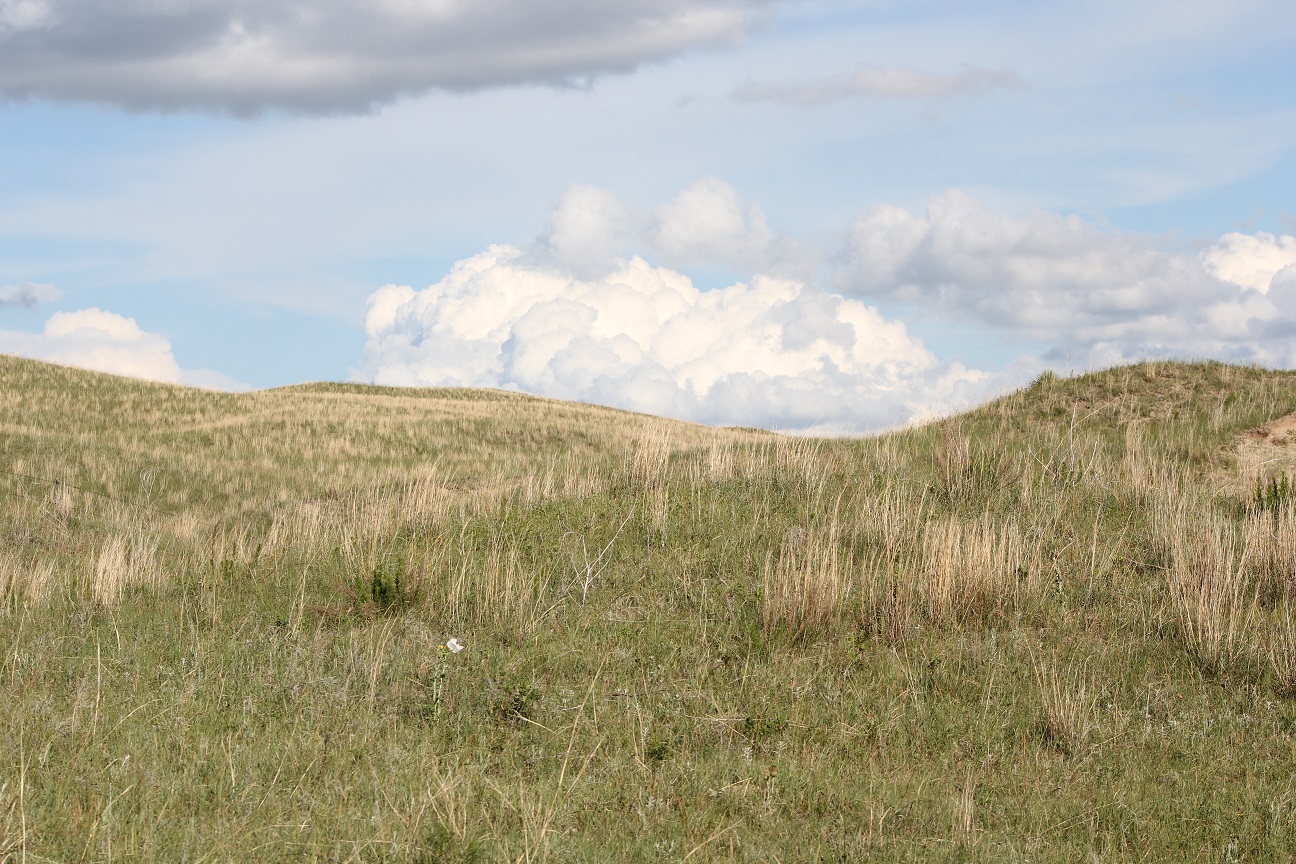
By Aaron Berger, NE Extension Educator
Warm, windy, dry conditions in the month of March have dried out the top soil in many parts of Nebraska. While there is still adequate subsoil moisture in many locations, the pattern of above normal temperatures with below normal precipitation is concerning.
Forage production from pasture and native range can vary significantly from year to year based on precipitation, temperatures, available nutrients and plant health. The first limiting factor for grass production in the Sandhills and Nebraska panhandle is spring and early summer precipitation. Planning to adjust stocking rates by critical "trigger" dates can help producers manage for expected shortfalls in forage production when precipitation and available soil moisture are below the long-term average.
From a rangeland and pasture production standpoint, it is good to remind ourselves of how critical available soil moisture is to plant growth. Cool- and warm-season grass species have "rapid-growth windows" when optimum air temperature, day length and soil moisture all need to be present to allow plants to fully express their growth potential. Once the "window" of opportunity has passed for a particular grass species, even if it does rain, it is too late to get significant growth from those plants.
From a grassland manager standpoint, lack of soil moisture and precipitation means limited forage growth and less grass available for grazing. Thus reducing what the expected appropriate stocking rate should be for the grazing season.
Precipitation during May, June and July are strongly correlated with forage production on warm-season dominated range sites in the Nebraska Sandhills.
In the Nebraska panhandle where many range sites are dominated by cool-season grass plants, precipitation in April, May and June is the major influencer of forage production.
TRIGGER DATES
Trigger dates by which to reduce stocking rates will vary depending upon the grass species present and available grazing resources. Here are some key trigger dates to consider for the Nebraska Sandhills as well as western Nebraska cool- and warm- season dominated range sites.
• Available soil moisture on April 1:. Look at dormant season precipitation from October – March and dig some post holes to see how much moisture is in the soil profile. A lack of soil moisture in early April will impact growth from cool-season grass species such as Threadleaf sedge (blackroot) and Needlegrasses. Exceptionally dry conditions at this time can trigger the need to plan for a 10-20% reduction in stocking rates on cool-season dominated rangeland.
• Moisture available from the middle of April to early May:. Track actual precipitation and watch forecast as they can give an expectation for the next 30-45 days in terms of precipitation. If prospects are for below average precipitation, additional reductions in stocking rates on pastures should be planned for.
• Late May into early June precipitation:. Needlegrasses will be completing their forage production by this time and western wheatgrass is in its rapid growth window. If March-May precipitation was only 50-75% of the long-term average for precipitation, a stocking rate reduction of 30-40% or greater should be planned for depending upon the grass species present and plant health. Warm-season grasses such as prairie sandreed and little bluestem are just getting started.
• Precipitation and soil moisture available from mid to late June:. Approximately 75 to 90% of grass growth on cool-season dominated range sites will occur by mid to late June. On warm-season dominated range sites 50% of grass growth will have occured. Rainfall after late June will result in limited benefit to cool-season grasses in terms of forage production but would still result in some benefit to warm-season grasses.
• Precipitation and available soil moisture from the middle of June to the middle of July is important for warm-season grass growth.
• Precipitation after July 15 will have limited benefit to forage production from warm-season tallgrass species but can still result in some forage growth from shortgrass warm-season species such as buffalograss and blue grama. However, buffalo grass and blue grama produce limited amounts of forage for grazing.
A proactive approach to reducing stocking rates can help producers manage for variation in forage production. A written grazing and drought management plan that uses trigger dates for executing decisions can be helpful to producers.
ADDITIONAL INFORMATION
The National Weather Service at http://www.cpc.ncep.noaa.gov has short and long term forecasts that indicate what is expected in terms of precipitation and temperatures.
Skillful Grazing Management on Semiarid Rangelands (http://extensionpubs.unl.edu/publication/9000016363788/skillful-grazing-management-on-semiarid-rangelands/): This NebGuide describes the growth pattern of grass species and provides information on grazing management practices.
Drought Management Planning (http://beef.unl.edu/cattleproduction/drought): This section of the Beef.unl.edu website provides a wide range of information related to drought including 'Managing Drought Risk on the Ranch' from the National Drought Mitigation Center. This resource provides additional information on trigger dates and a planning guide.
Managing Drought Risk on the Ranch http://drought.unl.edu/ranchplan/Overview.aspx
To listen to BeefWatch podcasts go to: https://itunes.apple.com/us/podcast/unl-beefwatch/id964198047 or paste http://feeds.feedburner.com/unlbeefwatch into your podcast app.